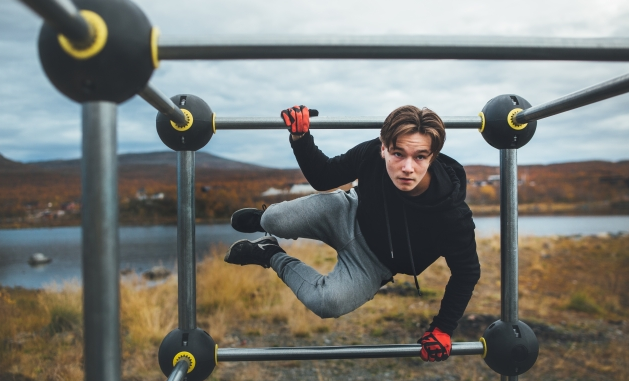
Parkour is a rapidly expanding urban sport which is based around free running, where people climb, swing and jump from one obstacle to another. The sport we know it as today originated in the suburbs of Paris, and is now gaining traction worldwide, as a network of clubs and societies develop. It is hoped by many in the sport that it will one day make an appearance in the Olympic games, joining other street focused sports like skateboarding.
The first records of parkour were actually from 19th Century France, with the phrase “parcours du combatant” being used to describe an obstacle / assault course training style used by the French to make their army so effective. Today’s sport is closely based around the principles of this type of training.
We have all seen YouTube videos of people leaping over rooftops in cities like Berlin and London, with the consequences of a fall not worth thinking about. But there’s more to parkour than death defying jumps 15 stories up. This article discusses why purpose built parkour zones are being created across the UK, allowing people interested in trying it out to do so in a safe, controlled environment, and gives a information on a few good skills to learn to get started.
Benefits of Parkour
Parkour is also great for building up strength and fitness, with the physique of a skilled practitioner often likened to that of a professional boxer. The constant moving and twisting involved gives a fantastic full body work out, with special emphasis on the core. The key fitness elements needed are:
- Balance
- Core Strength
- Coordination
- Strong Cardio
Balance
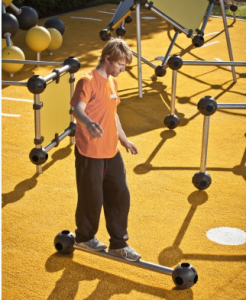
Perhaps the most important skill needed to be successful at the sport is balance. As seen from the video below, the ability to be in control of your body posture and walk along narrow beams and boxes is essential to be able to successfully practice the sport. Start off with walking along a straight balance beam, to master the basics, before progressing to a curved beam. As you get more confident, you can start to integrate a jump into your workout. This involves having two beams, at a set distance apart, and launching from one to the other, with the aim being to land on the bar without your feet touching the ground.
Core Strength
Core strength exercises develop muscles that form the “core” of your body, such as the abdominals, back muscles, and muscles around the pelvis. Many aspects of a parkour workout train these areas, and developing core strength is to be able to progress to more challenging manoeuvres.
Swinging activities are one of the best ways parkour can improve core strength. In purpose built parkour parks, a large, usually metal framed apparatus is the ideal way practice this. Horizontal bars at pre set distances allow users to swing from one bar to the next. Similar to a monkey bars set often seen in school playgrounds, these are known in professional circles as “Gibbon Swings”. They are often inverted, rather than being at a single horizontal height, to add to the challenge.
Cardio
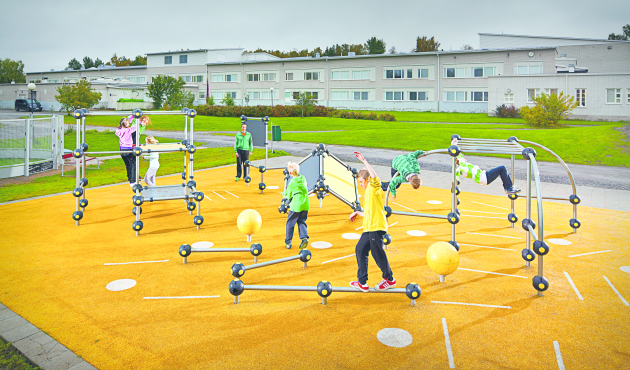
Like all outdoor sports, practicing parkour is an effective way to improve cardio endurance. The short, sharp twisting movements and agility based exercises get the heart rate up to high levels, and into the fat burning zone. It is estimated that spending an hour at a purpose designed parkour facility can burn up to 600 – 900 calories in a session, depending on the intensity. With childhood obesity rates on the rise, and the link between Covid 19 deaths and obesity emerging, there has never been a better time to get young people involved in the sport.
Basic Skills to practice
Parkour can seem daunting at first, but once a few basic skills have been mastered, it becomes much simpler, and opens up a wide range of other manoeuvres. 3 Basic skills to learn at the beginning of your parkour career are:
- The Cat Leap
- Vaulting
- The Swing Through
Cat Leap
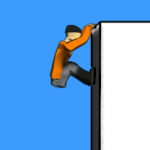 The Cat Leap, also known as the arm jump or arm leap, is a technique used to land on a vertical faced object, such as a wall or fence. The aim is to let your arms and legs absorb the impact of the wall, attaching to it with the hands grabbing the top ledge and feet flat on the surface, before propelling forward. The cat leap can be challenging on the first few tries, but opens up large parts of the parkour area once mastered.
The Cat Leap, also known as the arm jump or arm leap, is a technique used to land on a vertical faced object, such as a wall or fence. The aim is to let your arms and legs absorb the impact of the wall, attaching to it with the hands grabbing the top ledge and feet flat on the surface, before propelling forward. The cat leap can be challenging on the first few tries, but opens up large parts of the parkour area once mastered.
Vaulting
At a basic level, vaulting is the act of clearing an obstacle, such as a wall or rail, by placing your hands on the object you are trying to clear, and swing your body horizontally over. The basic vault, a “speed vault”, involves jumping off your left leg, placing your left hand on the wall or fail, and landing on your left leg. Once this has been mastered, more challenging vaults, such as the Thief Vault, or the Kong Vault, can be attempted. The Thief Vault involves taking off on your left leg, placing your left hand on the obstacle, and landing on your right leg. The Kong Vault is a little different again, with the practitioner approaching the obstacle head on, placing the right hand on the wall and kicking their legs up backwards as their clear the wall. In total, there are over 20 different vault styles to practice.
The Swing Through
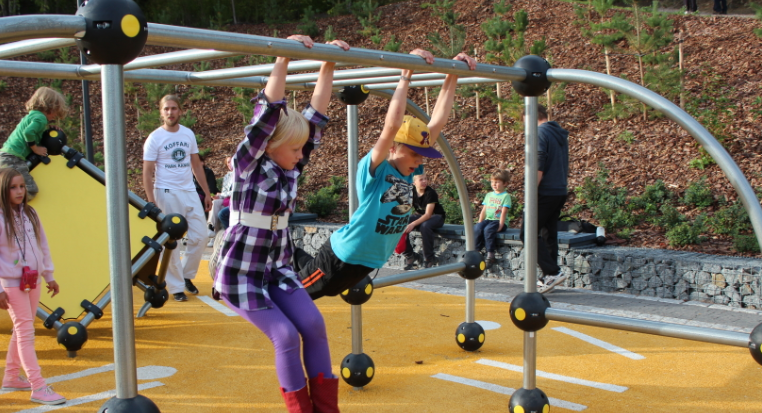
The swing through, also known as the lache, is another good move to learn, and features frequently in most parkour set ups. A swing through is where a practitioner uses their own body weight as momentum, hanging from a horizontal bar and rocking back and forward to generate the movement. When enough momentum is created, the practitioner lets go at the forward end of the swing, leaving the bar, before grabbing hold of an adjacent bar.
Parkour Training Equipment
You can also get playground equipment for adults similar to the Ninja Warrior courses.
